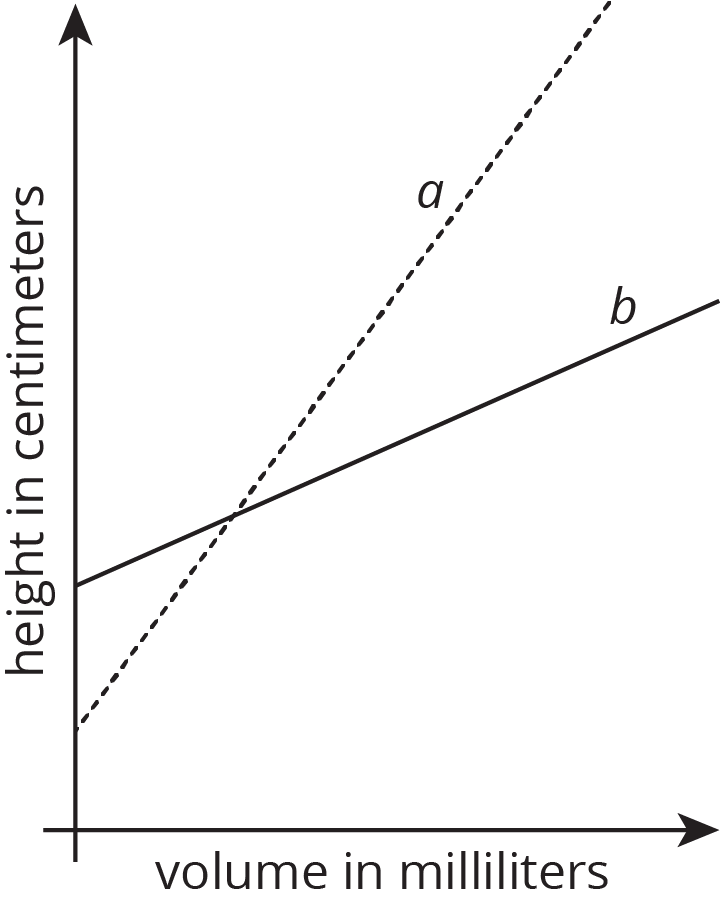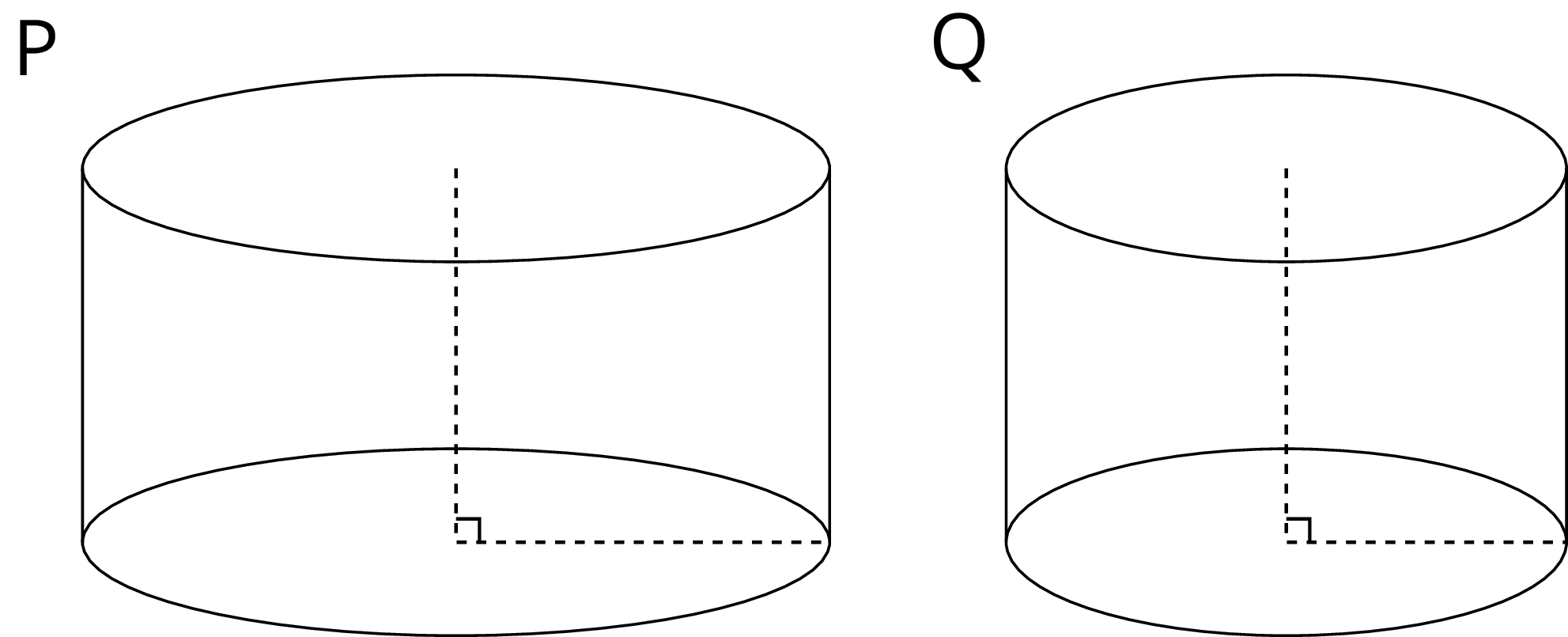Lesson 12
Filling Containers
Problem 1
Cylinder A, B, and C have the same radius but different heights. Put the cylinders in order of their volume from least to greatest.

Solution
For access, consult one of our IM Certified Partners.
Problem 2
Two cylinders, \(a\) and \(b\), each started with different amounts of water. The graph shows how the height of the water changed as the volume of water increased in each cylinder. Match the graphs of \(a\) and \(b\) to Cylinders P and Q. Explain your reasoning.


Solution
For access, consult one of our IM Certified Partners.
Problem 3
Which of the following graphs could represent the volume of water in a cylinder as a function of its height? Explain your reasoning.

Solution
For access, consult one of our IM Certified Partners.
Problem 4
Together, the areas of the rectangles sum to 30 square centimeters.

- Write an equation showing the relationship between \(x\) and \(y\).
- Fill in the table with the missing values.
\(x\) 3 8 12 \(y\) 5 10
Solution
For access, consult one of our IM Certified Partners.
(From Unit 6, Lesson 3.)